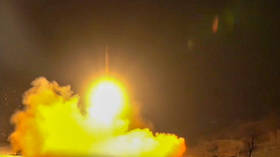- Joined
- Jul 9, 2011
- Messages
- 2,759
- Points
- 48
https://www.rt.com/news/477773-satellite-iran-attack-damage/
https://www.rt.com/news/477773-satellite-iran-attack-damage/
https://www.rt.com/news/477773-satellite-iran-attack-damage/
News
Satellite images show MINOR but PINPOINT damage to US-Iraqi bases from Iranian missile attack, suggesting limited show of force
9 Jan, 2020 01:22
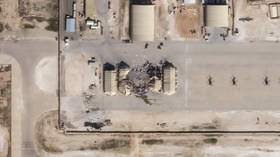
This satellite image released by Planet Labs Inc. reportedly shows damage to the Ain Al-Asad US airbase in western Iraq, after being hit by rockets from Iran, January 8, 2020. © AFP / Planet Labs Inc. Handout

Commercial satellite imagery of military bases in Iraq targeted by Iranian missile strikes show only minor damage, bolstering theories that Tehran was aiming for a flashy show of force rather than to actually kill US troops.
The Ain Al-Asad military base in Iraq’s Anbar province, as well as another facility outside Erbil, in the Iraqi Kurdistan, found themselves under fire by two volleys of ballistic missiles, fired from inside Iran during the night between Tuesday and Wednesday. Satellite imagery released on Wednesday by the private US company Planet Labs shows only minor damage in both places, mostly to warehouses and equipment storage facilities rather than barracks.
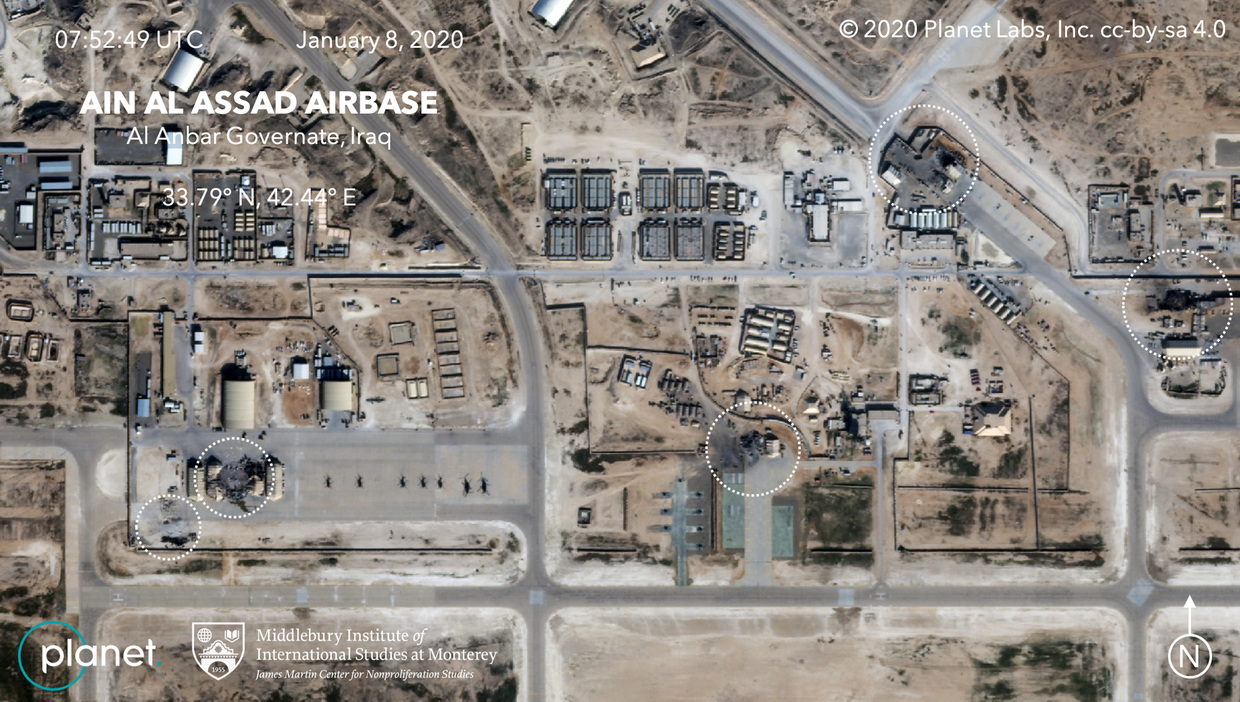
© AFP / Planet Labs Inc. Handout
Iran’s Islamic Revolutionary Guards Corps (IRGC) launched the missiles as revenge for the US drone strike that killed General Qassem Soleimani, one of their top commanders, last week outside of Baghdad. Despite belligerent rhetoric that accompanied the missiles, Iran stood down after just two volleys, claiming its legitimate self-defense objectives were met.
ALSO ON RT.COMIran didn’t want to kill US troops with its strike, it wanted to make point to Trump about its missile tech & resolve. It did that
US President Donald Trump likewise declared “all is well,” declined to respond with force, and commended Tehran’s decision as “a good thing for all parties concerned.”
No US or Iraqi soldiers were killed in the strikes. The Pentagon claimed its early warning systems caught the launches, allowing US troops to seek shelter.
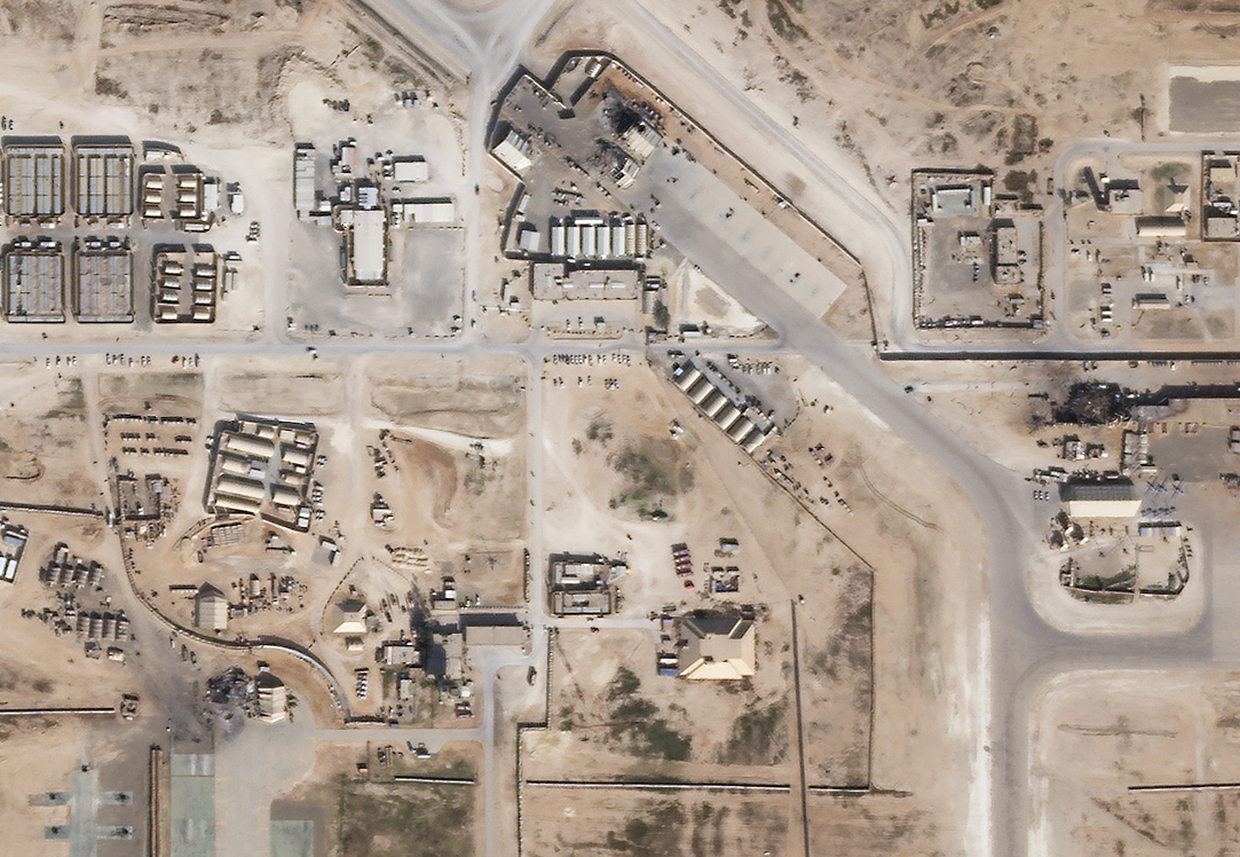
© AFP / Planet Labs Inc. Handout
The Iraqi government revealed on Wednesday that Iran actually called and warned them of the strike in advance, which they then passed on to Washington. Finland and Lithuania, which also have troops stationed at the two bases, also reportedly said they were informed of the strikes in advance.
ALSO ON RT.COMTop US general claims Iran was ‘shooting to kill’… by giving early warning to hide personnel & prepare air-defenses?
All of this has prompted speculation that the Iranian missile strikes were more of a symbolic act than a true escalation of the ongoing conflict between Tehran and Washington. Iran proved it had the capability to kill US troops if it so chose, but deliberately refrained from it, argued former US Marine and UN weapons inspector Scott Ritter.
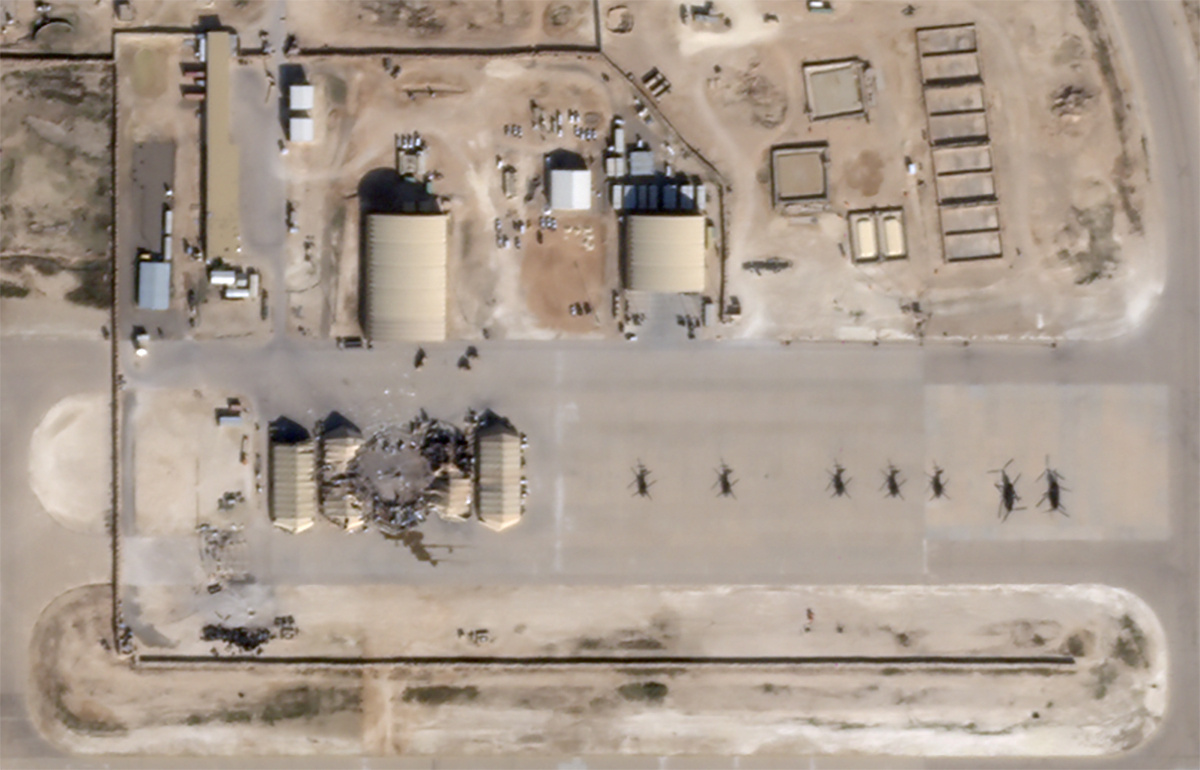
© Reuters / Planet Labs Inc. Handout
The top US general, however, claimed on Wednesday that his “personal assessment” was that the IRGC was shooting to kill.
“I believe, based on what I saw and what I know, that [the strikes] were intended to cause structural damage, destroy vehicles and equipment and aircraft, and to kill personnel,” Army General Mark Milley told reporters.
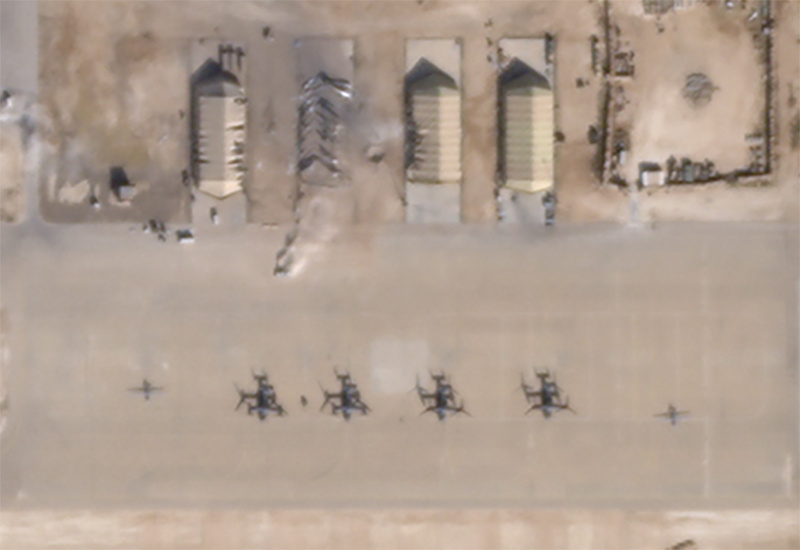
© Reuters / Planet Labs Inc. Handout
Think your friends would be interested? Share this story!
https://www.rt.com/news/477773-satellite-iran-attack-damage/
https://www.rt.com/news/477773-satellite-iran-attack-damage/
News
Satellite images show MINOR but PINPOINT damage to US-Iraqi bases from Iranian missile attack, suggesting limited show of force
9 Jan, 2020 01:22

This satellite image released by Planet Labs Inc. reportedly shows damage to the Ain Al-Asad US airbase in western Iraq, after being hit by rockets from Iran, January 8, 2020. © AFP / Planet Labs Inc. Handout
- 485

Commercial satellite imagery of military bases in Iraq targeted by Iranian missile strikes show only minor damage, bolstering theories that Tehran was aiming for a flashy show of force rather than to actually kill US troops.
The Ain Al-Asad military base in Iraq’s Anbar province, as well as another facility outside Erbil, in the Iraqi Kurdistan, found themselves under fire by two volleys of ballistic missiles, fired from inside Iran during the night between Tuesday and Wednesday. Satellite imagery released on Wednesday by the private US company Planet Labs shows only minor damage in both places, mostly to warehouses and equipment storage facilities rather than barracks.

© AFP / Planet Labs Inc. Handout
Iran’s Islamic Revolutionary Guards Corps (IRGC) launched the missiles as revenge for the US drone strike that killed General Qassem Soleimani, one of their top commanders, last week outside of Baghdad. Despite belligerent rhetoric that accompanied the missiles, Iran stood down after just two volleys, claiming its legitimate self-defense objectives were met.
ALSO ON RT.COMIran didn’t want to kill US troops with its strike, it wanted to make point to Trump about its missile tech & resolve. It did that
US President Donald Trump likewise declared “all is well,” declined to respond with force, and commended Tehran’s decision as “a good thing for all parties concerned.”
No US or Iraqi soldiers were killed in the strikes. The Pentagon claimed its early warning systems caught the launches, allowing US troops to seek shelter.

© AFP / Planet Labs Inc. Handout
The Iraqi government revealed on Wednesday that Iran actually called and warned them of the strike in advance, which they then passed on to Washington. Finland and Lithuania, which also have troops stationed at the two bases, also reportedly said they were informed of the strikes in advance.
ALSO ON RT.COMTop US general claims Iran was ‘shooting to kill’… by giving early warning to hide personnel & prepare air-defenses?
All of this has prompted speculation that the Iranian missile strikes were more of a symbolic act than a true escalation of the ongoing conflict between Tehran and Washington. Iran proved it had the capability to kill US troops if it so chose, but deliberately refrained from it, argued former US Marine and UN weapons inspector Scott Ritter.
© Reuters / Planet Labs Inc. Handout
The top US general, however, claimed on Wednesday that his “personal assessment” was that the IRGC was shooting to kill.
“I believe, based on what I saw and what I know, that [the strikes] were intended to cause structural damage, destroy vehicles and equipment and aircraft, and to kill personnel,” Army General Mark Milley told reporters.
© Reuters / Planet Labs Inc. Handout
Think your friends would be interested? Share this story!


